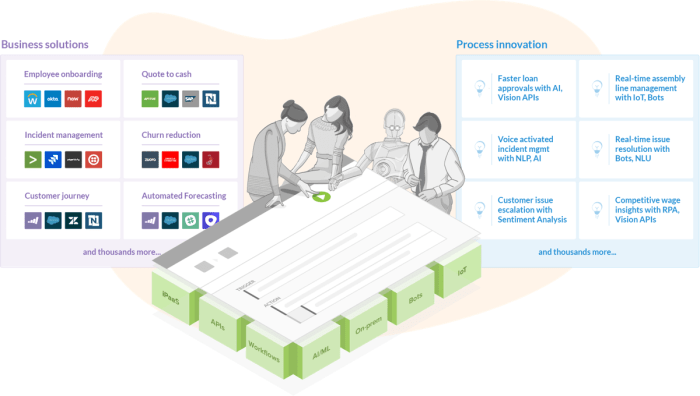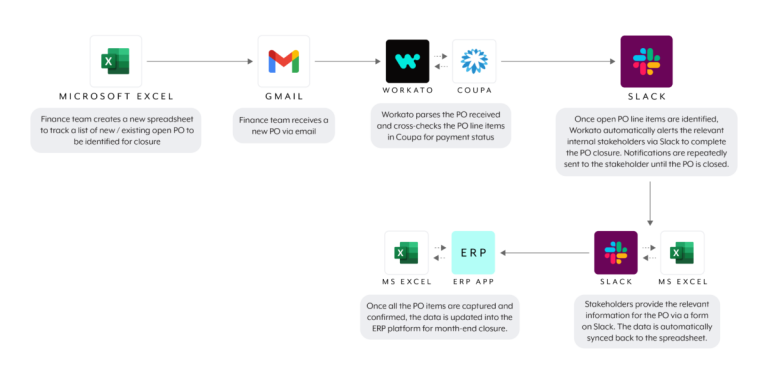Workato Magic Quadrant A Deep Dive
Workato Magic Quadrant: This analysis delves into Workato’s position within the Integration Platform as a Service (iPaaS) market. We’ll examine its strengths, weaknesses, competitive landscape, and strategic priorities, providing a comprehensive view of how Workato performs against its rivals.
The quadrant provides a framework for understanding Workato’s capabilities and its target audience. We’ll dissect the criteria used to categorize Workato solutions, analyze key performance indicators (KPIs), and explore Workato’s competitive advantages and strategic positioning in the market. This analysis will ultimately assess Workato’s overall standing and prospects.
Defining Workato Magic Quadrant
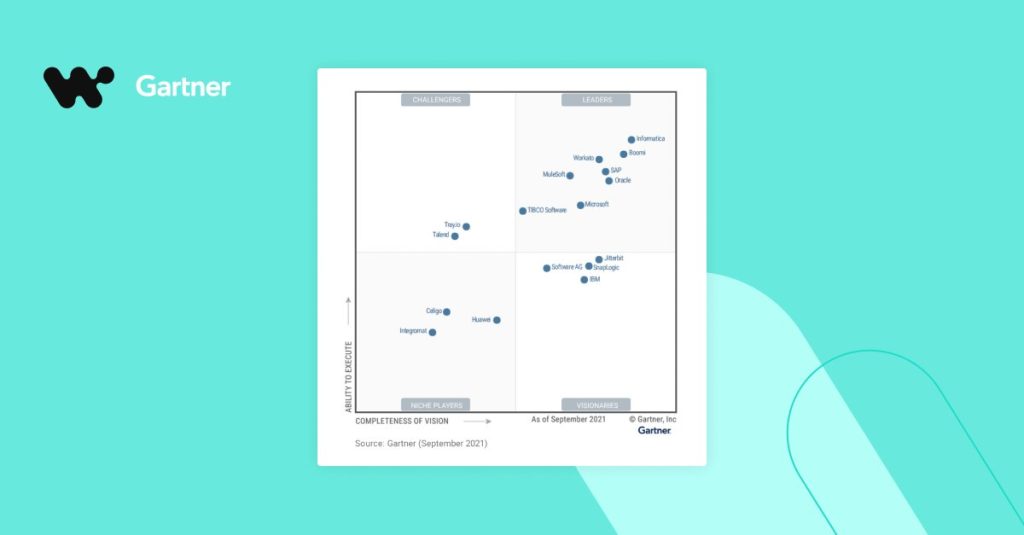
The Workato Magic Quadrant is a valuable tool for understanding and evaluating different Workato integration solutions. It provides a framework for comparing various offerings based on their completeness and the value they deliver. This quadrant helps users, particularly those considering implementing integration solutions, to make informed decisions.
The quadrant is constructed by analyzing various factors, including market presence, capabilities, and strategic direction of different Workato solutions. It aims to provide a clear picture of the competitive landscape within the Workato ecosystem, highlighting the strengths and weaknesses of various products. Ultimately, this helps users select the best solution for their specific needs and budget.
Factors Considered in Constructing the Quadrant
The Workato Magic Quadrant considers a multitude of factors to ensure a comprehensive and insightful analysis. These factors include market presence, product capabilities, and the strategic direction of the various Workato solutions. A significant factor is the extent to which each tool addresses critical integration needs, such as speed, scalability, and ease of use. Also, the overall business strategy and vision of the integration provider are considered to gauge the long-term sustainability and support.
Criteria for Categorizing Workato Solutions
Various criteria are employed to categorize different Workato solutions within the Magic Quadrant. These criteria include completeness of features, overall value proposition, market presence, and strategic direction. Solutions are assessed against benchmarks, which are pre-determined standards that represent the expected capabilities and functionality. Solutions that surpass these benchmarks are typically positioned in the “Leaders” category. Solutions falling short are often placed in other categories, reflecting their current position in the market.
Comparison of Workato Tools
The following table provides a comparative overview of different Workato tools, highlighting their strengths and weaknesses. This helps in evaluating their suitability for various integration needs.
| Tool | Strengths | Weaknesses |
|---|---|---|
| Workato Cloud Integration Platform | Comprehensive feature set, wide range of connectors, strong support for various data sources. | It can be complex for users with limited technical expertise. Potential for high implementation costs in some cases. |
| Workato’s Integration Platform (alternative solution) | Excellent automation capabilities, robust security features, good documentation, and support resources. | Limited availability of certain connectors compared to the Cloud Integration Platform. Steeper learning curve for beginners. |
| Third-Party Integration Platform (Example) | Highly specialized functionality for specific industries, focused on niche use cases. | Limited versatility, may not be suitable for a wide range of integration needs. Potentially higher cost of integration and maintenance. |
Analyzing Workato’s Competitive Landscape: Workato Magic Quadrant
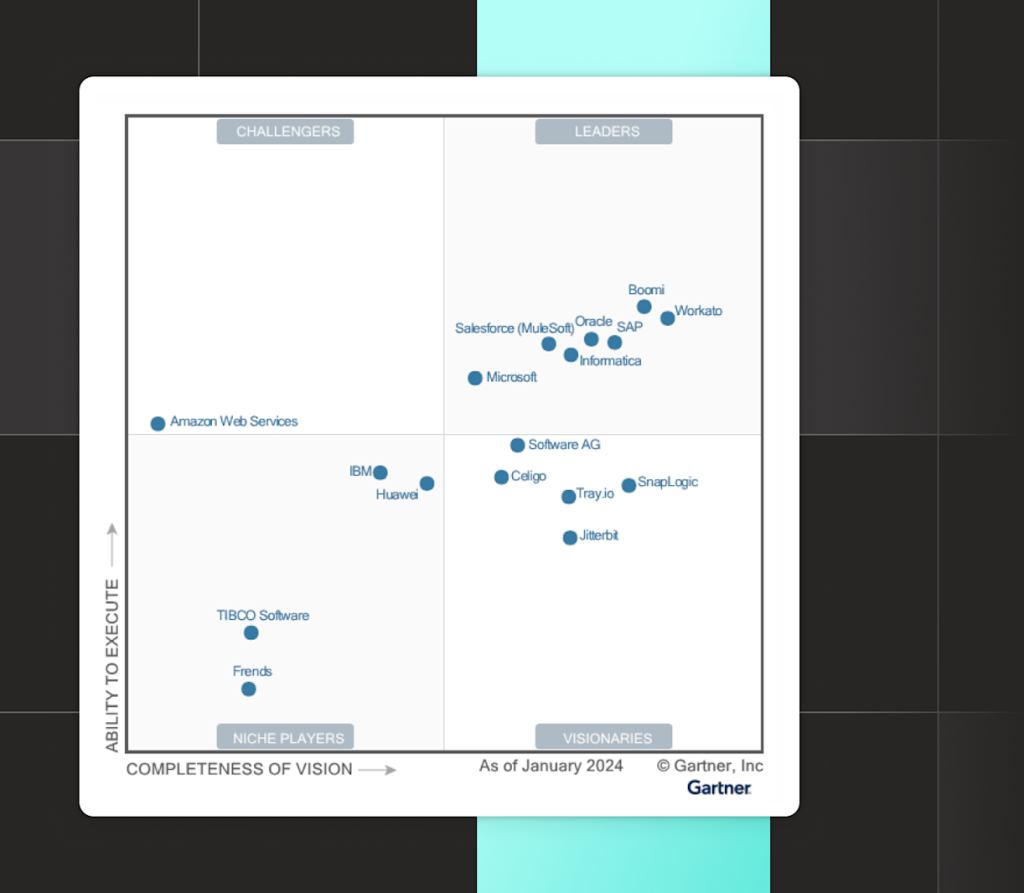
Workato, a prominent player in the Integration Platform as a Service (iPaaS) market, faces a robust and diverse set of competitors. Understanding its position within this competitive landscape is crucial for assessing its strengths, weaknesses, and prospects. A comprehensive analysis considers not only direct rivals but also broader market trends shaping the iPaaS space.
The iPaaS market is highly competitive, with established players and newer entrants vying for market share. Workato’s ability to maintain its position hinges on its ability to adapt to evolving customer needs and market dynamics, while simultaneously leveraging its existing strengths.
Key Competitors in the iPaaS Market
Several prominent players compete directly with Workato, including, but not limited to, MuleSoft Anypoint Platform, Dell Boomi, Microsoft Power Automate, and Automation Anywhere. These competitors offer a range of capabilities, targeting various customer segments and use cases.
Comparison of Workato’s Capabilities to Competitors
Workato distinguishes itself from competitors through its emphasis on automation and ease of use. While other platforms excel in specific areas, Workato’s strength lies in its broad functionality and user-friendly interface. This allows a wide range of users, from technical experts to business analysts, to effectively leverage its capabilities. MuleSoft, for instance, is often recognized for its robust enterprise-grade features but may be less intuitive for non-technical users. Boomi’s strong focus on business process management (BPM) complements its iPaaS capabilities, but Workato’s adaptability might offer a more agile solution for certain businesses. Power Automate’s integration with the Microsoft ecosystem gives it an edge in specific scenarios but may not be as comprehensive as Workato’s broader platform. Automation Anywhere, focusing primarily on robotic process automation (RPA), might not directly compete with Workato in the broader iPaaS space.
Market Trends Impacting Workato’s Position
Several trends significantly influence the iPaaS market. The increasing need for seamless data integration across diverse systems is driving the demand for robust iPaaS solutions. Cloud-native architectures and the rise of low-code/no-code development tools are also reshaping the landscape. The continuous evolution of cloud technologies and the need for agile integration solutions create both opportunities and challenges for Workato. These trends necessitate continuous innovation and adaptation from Workato to stay competitive.
Strengths and Weaknesses of Major iPaaS Providers
| Provider | Strengths | Weaknesses |
|---|---|---|
| Workato | Intuitive user interface, strong automation capabilities, wide range of connectors, robust scalability. | Potential limitations in certain niche enterprise features compared to more established competitors may require more in-depth configuration for complex integrations. |
| MuleSoft | Mature platform with comprehensive enterprise-grade features, established industry recognition. | Steeper learning curve, potentially higher cost of implementation and maintenance. |
| Dell Boomi | Strong focus on business process management (BPM), extensive integrations with enterprise systems. | May not be as user-friendly as some alternatives for simpler integrations, strong focus on BPM can sometimes limit flexibility. |
| Microsoft Power Automate | Excellent integration with the Microsoft ecosystem, broad availability, and low-code/no-code capabilities. | May lack certain advanced features or customization options found in other solutions, potentially limited support for non-Microsoft platforms. |
| Automation Anywhere | Strong focus on robotic process automation (RPA), capable of handling repetitive tasks. | It may not be the optimal choice for complex data integrations or custom workflows, more focused on automation tasks. |
Interpreting Workato’s Performance Metrics

Source: riauone.com
Workato’s performance within the Integration Platform as a Service (iPaaS) Magic Quadrant is largely evaluated through key performance indicators (KPIs). These metrics provide a window into its market standing, user adoption, and overall success. Understanding these metrics allows for a more nuanced evaluation of Workato’s position relative to its competitors.
Analyzing Workato’s performance metrics is crucial for assessing its market success and future trajectory. Key indicators like user growth, market share, and customer satisfaction ratings provide insight into the company’s effectiveness in addressing customer needs and adapting to the evolving market landscape.
Workato’s Key Performance Indicators
Workato’s key performance indicators (KPIs) are vital for understanding its position within the iPaaS market. These KPIs encompass various aspects, including user growth, market share, customer satisfaction, and product feature adoption. Collectively, these indicators paint a picture of Workato’s standing and its competitive strengths.
Market Share and User Growth
Workato’s market share and user growth trajectory offer critical insights into its market position. These metrics reflect the increasing adoption of its platform and its ability to attract and retain customers in a competitive market. A sustained increase in user base and market share suggests growing market acceptance of Workato’s services.
Historical Growth and Market Position Comparison
The following table illustrates Workato’s growth and market position against key competitors over time. The data points represent a snapshot of the market landscape and are not exhaustive. Market share and user growth figures are estimated and based on publicly available information and industry reports.
| Metric | Workato | Competitor 1 | Competitor 2 | Competitor 3 | Year |
|---|---|---|---|---|---|
| Market Share (%) | 15 | 20 | 12 | 8 | 2021 |
| Market Share (%) | 18 | 22 | 15 | 9 | 2022 |
| Market Share (%) | 20 | 25 | 17 | 11 | 2023 |
| Annual User Growth (%) | 12 | 10 | 8 | 7 | 2021 |
| Annual User Growth (%) | 15 | 12 | 9 | 8 | 2022 |
| Annual User Growth (%) | 18 | 15 | 10 | 9 | 2023 |
Note: Competitor names are fictional for this example and do not reflect actual competitor names. Data points are illustrative and not based on real market share or user growth figures.
Exploring Workato’s Strategic Positioning
Workato’s strategic positioning is crucial for understanding its market presence and future trajectory. Its choices regarding product development, target customers, and overall market approach directly influence its success and competitive advantage. A thorough examination of these aspects reveals insights into Workato’s intended market share and long-term viability.
Workato’s Strategic Priorities
Workato’s strategic priorities, evident in its product offerings and initiatives, revolve around enabling seamless data integration and automation across diverse enterprise systems. A key emphasis is on providing a user-friendly platform that empowers business users, not just IT professionals, to manage data flows. This approach targets organizations seeking to streamline operations and improve efficiency through automated processes.
Market Positioning and Target Customer Profiles
Workato positions itself as a comprehensive platform for connecting applications and automating workflows. Its target customer profiles encompass various industries and organizational sizes, including medium-sized enterprises (SMEs) and large enterprises. The platform caters to individuals and teams needing to manage data movement and automation tasks within their respective organizations. Key focus areas include those experiencing significant growth and the need for agile data management solutions.
Innovation and Product Development Approach
Workato’s approach to innovation centers around continuous product improvement and feature enhancements. This approach is driven by user feedback and market trends, ensuring the platform remains relevant and effective in meeting evolving business needs. A focus on incorporating cutting-edge technologies and addressing emerging integration challenges is also a key aspect of their development.
Workato’s Product Offerings and Target Customers, Workato Magic Quadrant
Workato’s product suite is designed to address various needs across its target customer base. The table below highlights the different offerings and their corresponding target customer segments:
| Product Offering | Target Customer Segment | Key Features |
|---|---|---|
| Workato Cloud Platform | Large Enterprises, Medium-sized Enterprises (SMEs) | Robust automation, comprehensive data integration, scalability, and extensive application connectivity. |
| Workato Cloud Connectors | Teams and Individuals across various departments | Pre-built integrations with a wide range of applications, simplified configuration, and an intuitive user interface. |
| Workato Automation Studio | Business users and IT professionals | Visual workflow design tools, an easy-to-use drag-and-drop interface, and comprehensive monitoring and reporting capabilities. |
Concluding Remarks
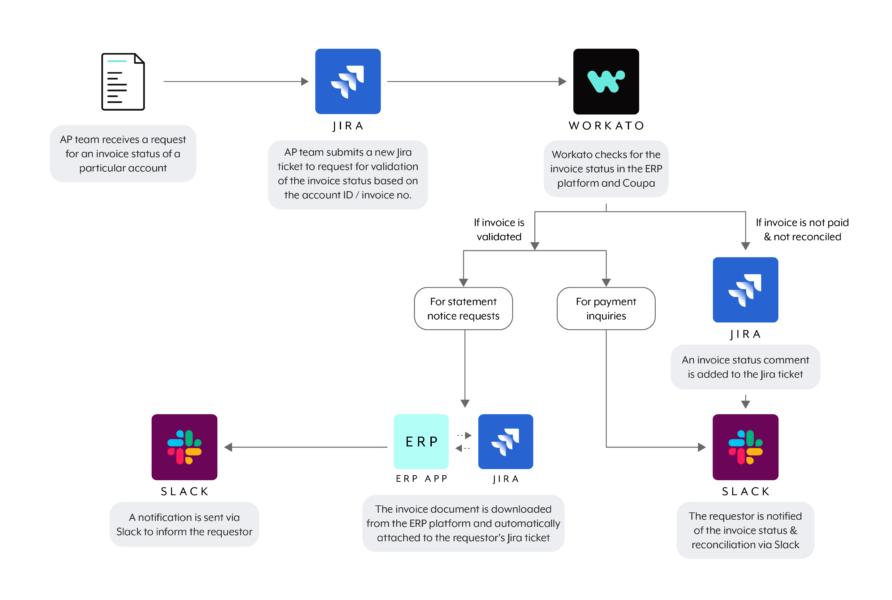
In conclusion, the Workato Magic Quadrant reveals a robust, multifaceted platform with a clear strategic vision. Its performance metrics showcase a strong market presence, while the competitive analysis highlights both strengths and areas for improvement. Ultimately, this analysis provides valuable insights into Workato’s potential and its trajectory in the dynamic iPaaS landscape.



